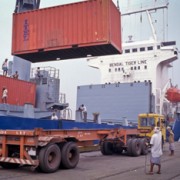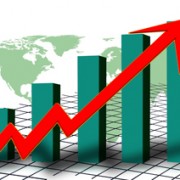Archive | July, 2013
Finance sector development
 Industry and trade
Industry and trade
 Industry and trade
Industry and trade

Few firms in the PRC and India use capital markets to obtain financing and grow

One of the most notable developments in the world economy over the past 20 years has been the rise of the People’s Republic of China (PRC) and India as global economic powers, accompanied by high overall growth and an increase in their financial activity. But how much have the PRC and Indian firms used and benefitted from the expansion in capital markets to obtain financing and grow? In a new paper (Didier and Schmukler, 2013), we study this question by assembling a unique and comprehensive data set on domestic and international capital raising activity and performance of publicly listed Chinese and Indian firms.
Why Indian business should embrace the RCEP

Mega regional trade deals are in vogue in a fragile world economy as a means to spur trade and growth. Asia’s mega regional trade deal—the Regional Comprehensive Economic Partnership (RCEP), which includes India—is quietly being negotiated. But it deserves more press because the RCEP would create the world’s largest trading bloc and have major implications for Asian countries and the world economy. India is an important player in the RCEP negotiations but some Indian businesses are concerned about the prospect of further Indian trade with, particularly imports from, the People’s Republic of China (PRC). What would the RCEP cover and will Indian business benefit? What are the barriers to success and what should be done to overcome the hurdles?
RCEP and TPP: Next stage in Asian regionalism

According to a report by the Asian Development Bank (2008), “Asia’s economies are increasingly vital to each other and to the world. Asia’s output today roughly equals that of Europe or North America, and may well be 50% larger than theirs by 2020, in terms of purchasing power parity.” Moreover, with both the US and Europe continuing to post low GDP growth of 1% to 2.5% annually, the center of the recovery has shifted to Asia. These factors became apparent during the November 2012 ASEAN summit, when Asia saw two different approaches to trade liberalization. One is the ASEAN-led Regional Comprehensive Economic Partnership (RCEP) and the other is the US-led Trans-Pacific Partnership (TPP).


Search
Subscribe / Connect to Asia Pathways
Subjects
- Agriculture and natural resources
- Blog
- Capacity development
- Climate change
- Economics
- Education
- Energy
- Environment
- Finance sector development
- Gender
- Governance and public sector management
- Health
- Industry and trade
- Information and Communications Technology
- Infrastructure
- Miscellaneous
- Population
- Poverty
- Private sector development
- Regional cooperation and integration
- Sanitation
- Social development and protection
- Transport
- Uncategorized
- Urban development
- Video Blog
- Water
Recent Posts
- Artificial intelligence: A new driver for inclusive growth and development?
- Increasing trust in cross-border e-commerce and artificial intelligence
- Enhancing access to maternal and newborn healthcare in developing Asia
- Can electric vehicles lead the way to a sustainable future?
- Mitigating climate-related sovereign risk to accelerate action on the climate emergency




Recent Comments